While we bask in the summer sun and drive our beloved Aircooled VWs -windows down and radio up; spare a thought for your engine slaving away behind you. Here’s a few tips to help your VW aircooled engine survive summer!Air Cooled? Well, yes, your engine certainly doesn’t have any water in it; but it has an unsung hero, circulating and helping to keep the temperatures under check too.
The Type 1 engine holds a lowly 2.5 litres of oil; not a huge amount – and it’ll soon lose its charm if you don’t change it regularly. As the life blood of your engine the oil is acting as an internal coolant, similar to the way water flows through a modern engine. Which oil to use is a debate that could rage for days – check out our thoughts on the website here.
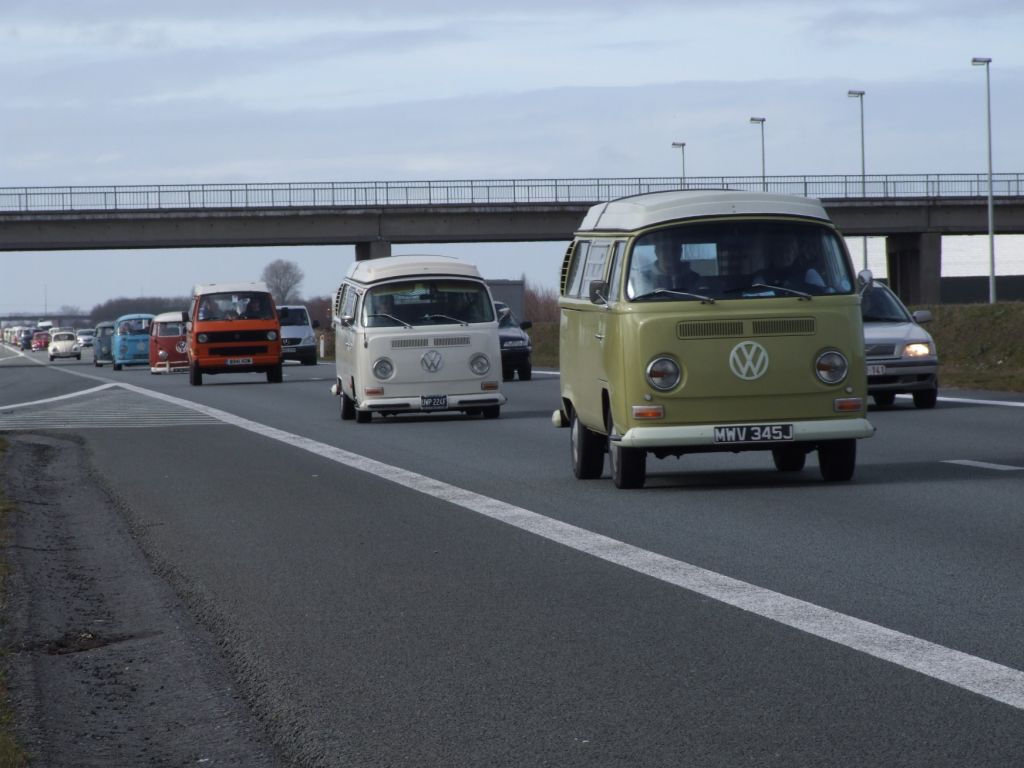
If you have a twinport engine, your standard ‘Dog house’ oil cooler will try its best to catch the cool air being directed through the tinware, which is adequate in most cases, but in the heat of summer, or with the added load of a bus on top of it, it’ll be pleased if you added an external oil cooler system to really help things out. The cooler the oil, the cooler your engine will run!
You’ve probably heard Tinware mentioned a thousand times when it comes to Aircooled VW engine cooling, the reason is this; it really does matter! Incidently – chrome tinware reflects the heat, and black tinware absorbs it..so unless you have an ‘open’ engine compartment (like in a Buggy or Baja) we would recommend sticking with normal black tinware to keep temperatures under control.
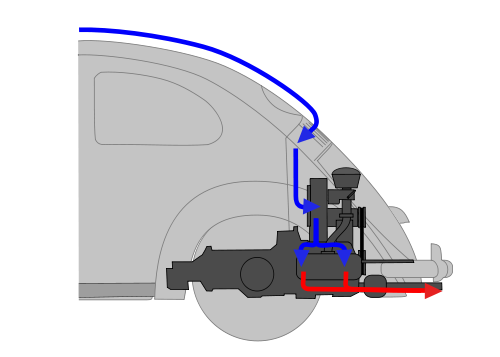
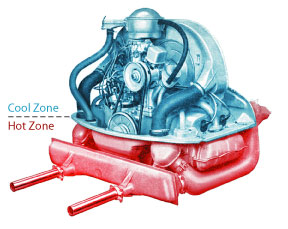
Missing tinware compromises the whole cooling system (imagine trying to heat your house while your windows and doors are open – it’s the opposite of that!) the hot and cold sections of the engine should be sealed from one another. The diagram above shows the airflow nicely; if any of the tin ware should be missing or ill-fitting it would allow for the warm air at the bottom to be drawn back into the cool zone and recirculated back over the cylinder heads, raising the core temperature of your engine.
As important as the tinware itself, is the seal that surrounds it. One without the other is just asking for trouble!
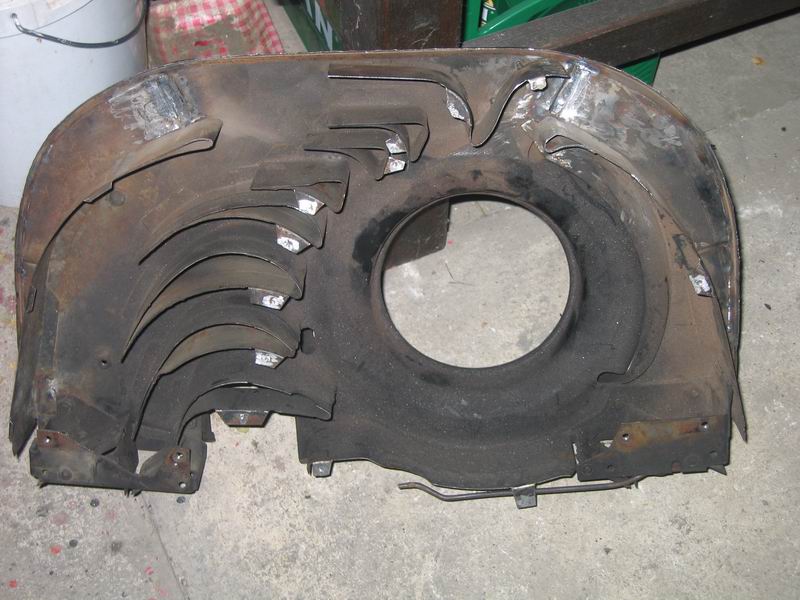
Inside your fan housing are fins to direct the air, and flaps; these flaps are located at the bottom and operated by your thermostat. First thing in the morning these flaps will be held closed; encouraging the engine to get up to temperature as fast as possible. But then the thermostat plays a vital role in your cooling system – as your engine gets warm it opens the cooling flaps within the fanshroud to allow the heat to pass through and escape. If you are unsure if your vehicle has these flaps – or a thermostat, please check! Whilst you can leave these flaps permanently open (or remove them), having them closed shut all the time will lead to almost certain overheating, and a costly bill!
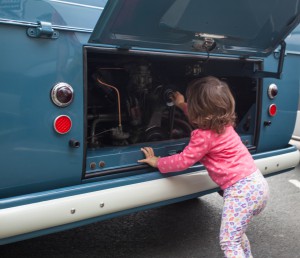
The last few points to consider in battling the heat is your ignition timing, air leaks and fueling. Poor ignition timing can cause your engine to run too hot; if you don’t have a timing gun see if you can borrow a friends – it’s unlikely to be visable if its wrong (you might hear it) but it’ll save you some heartache if you catch it before it catches you!
Fuel mixture is equally important -firstly is your carburettor jetted to suit the engine capacity (a single standard carb on a 1641cc engine could be starving your engine) and raising the temperatures internally. Likewise, your carb could be perfect – but if your engine is sneaking air in elsewhere through a split hose, or a broken gasket, then the whole mixture is compromised, and the chances of running lean, and hot are increased too. Spraying the intake system with Wd40 whilst running will help to detect this – an air leak will suck the spray in, using it as fuel and changing the engine note at the same time.
 Whilst we hope the above suggestions will help to keep the heat down in your engine bay, monitoring it from the comfort of your cabin is the ‘thinking-mans’ way to tackle this issue! If you notice a change, and stop in time – you can let an ‘expert’ sort it out when you get home!
Whilst we hope the above suggestions will help to keep the heat down in your engine bay, monitoring it from the comfort of your cabin is the ‘thinking-mans’ way to tackle this issue! If you notice a change, and stop in time – you can let an ‘expert’ sort it out when you get home!
An oil temperature sender mounted either in your sump plate, or as a dipstick, and linked to a gauge in the dashboard will report all the necessary information for you, removing any guesswork from the equation. We’ve put together this handy VDO kit to do just that; check it our on our website here.
Just before we round this up, please, please purchase a Fire Extinghuisher ‘just in case’. Sadly every summer is clouded by the sadness of roadside fires, some of which could have been put out if a fitted fire extinghuisher kit, like the DAUS had of been installed; alternatively they could of been tackled with a handheld bottle, at least giving the owner a sense of having tried to save their pride and joy in the event the worst happened. You can pick up a cheap one at a local DIY superstore. Don’t leave home without it!
Have a great summer, and stay cool!
Andy
The opinions expressed here are the personal opinions of the author and do not necessarily represent the views and opinions of VW Heritage.
PS: Interested in alternative methods to prevent from overheating? Read this


I run a 1302s with a standard twin port 1600 engine when I have a motor way trip in the summer I use a strip of Maccano bent to shape and bolted to the rear bumper and the underside lip of the engine lid cover holding it part open by about 4 inches this gives me a drop in temperature of 5-10 degrees on the vdu gauge.it can be fitted and removed in under 5 minutes with 2 small bolts and wing nuts
Please can you post some photo or a graphic representation?
“some of which could of been put out”
Some of which could HAVE been put out.
Whoops.. thanks Rich.
Please note that you can, as the article states, indeed remove the cooling flaps or the thermostat, or fix the flaps in the open position. This will however cause increased wear of the engine, as it will take longer to reach operating temperature. When (original) thermostats fail, they aren’t likely to do so in the closed position. It’s better to check the thermostat regularly, than to remove it.
http://www.ratwell.com/technical/Thermostats.html
Thanks for your comments Stan, and useful link too.
I have a 67 beetle original engine. With just a few upgrades to it. In the summer it runs to hot period. If I am driving in town only I remove my engine lid and have no over heating problems. On longer drives I prop it. So I am thinking I might want to check the timing. Thanks for the info.
I understand enfloat wear on main can determine to a degree the engine condition. What is the acceptable float?
on a 67 1500cc engine
with thanks Laurie
My 1971 beetle 1300cc twin port starts first time when cold , but if I travel 5 miles or more stop switch engine off ,and leave it 20 minutes to an hour ,then when I try to start engine ,it sometimes takes a good couple of minutes before it fires up.does anyone have any ideas, by the way engine has been rebuilt and has a new carb . Thanks
Michael, I’d suggest the hard start when warm is due to Vapor Lock. Fuel lines running near the engine absorb heat, cause the fuel in the line to boil, disturbing th flow of fuel to the carb. If you do not have an electric fuel pump in the car, I’d install one to counteract vapor lock. A simple low pressure EMPI/Facet fuel pump will do the trick. Install it near the fuel tank, in front.
Thank you Joseph, I was thinking along those lines .will get one fitted on its next service, thanks once again.
I have had a similar problem with vaperlock. When I was stationed in Germany I had two vintage VW’s that burned leaded fuel. When they switch to unleaded in that country, I had all kinds of gas problems even with additives. I currently have a ’70 transporter and a ’77 beetle in AZ. I’m convinced about how much ethanol they put in gas these days and how it affects the boiling point of fuels. I started using Marvel Mystery Oil in my gas and oil as an additive and the vaporlock ceased, engine runs quieter with noticeable performance response.
i have a 1972 Volkswagen Westfalia campervan with an upgraded 2.0 ltr air cooled petrol engine who’s fan has been removed. could this be a problem driving it in a warm country?
Hi Mark, the removal of the fan will be a problem full stop – warm country, or in the UK.
Please don’t use it until the issue is fixed, otherwise, you’ll be in for a big bill!
More a question !
The background info’.
I have a ’74 Cabriolet 1300cc Twin Port totally stock. However I understand that with the softtop down it spoils the airflow which creates a vacuum under the hood at the rear? Which in turn reduces airflow through the vents. I’ve located a stock VW thermostatically controlled flap vent which is locatef below the number plate light. This option was often used in Nevada USA or Australia. The location is identifiable on a standard engine lid by a rectangular depression which i will need cut out. There is even a depression for the bolt holding the thermostat.
Question
What should the top end of engine bay temperature be? I need to know this so I can check the function of the wax thermostat prior to fitting.
Hi Tony, I’m in Australia with a 1968 beetle and interested in the thermostatically controlled engine lid vent flap. Any more details of where you got it from would be highly appreciated. Cheers
What is the hottest temperature I can safely run my 79 VW bus at? I have been pulling over on very long steep hills when my oil gauge reads around 225 to 230°.
Can I drive any hotter or is this 230 degrees pushing the “safe limit”.
I have a VW kubelwagen and to part cure overheating problems I cut seven 32 mm holes in the parcel shelf then leave the rear windows (which are slot in) out of the rear doors . This allows air through the cabin , thorough the holes and straight into the engine compartment . The germans did a similar thing when using kubels in the desert . A similar thing could be done to a standard vehicle and open the front windows when driving in hot conditions .
I have a ’70 VW transporter that recently had the engine replaced from a 1600 to a 1915cc. Upon examination of the work, I noticed that they left out the engine compartment tin between the engine and the transmission located lower and behind the engine. (Not the firewall) I asked about why it wasn’t there and was told that the engine ran cooler without it, especially with larger block engines. Anyone hear that one before?
Whilst driving my 1641 T2 the fan belt came adrift without m e realising. Engine started to misfire so I pulled over and realised what had happened. The engine was very hot and now will not start. Pistons moves , distributor ok but plug leads melted onto plugs . Could I be lucky and only need to replace plugs and leads ?
Hello, what happened to your vw? Mine had the same yesterday and wanted to know is your engine ? Best regards
Hi, I Have purchased a 1969 single port 1969 BEETLE and the engine blown up before i could get it home
the engine was rebuilt by am told specialist in beetles
and Have found bottom Tinware missing ,,, cowling flap rod and thermostat missing,
any chance the flap and rod can be fitted without removing the engine
I was thinking to remove alternator and carburettor and check inside the cowling if the flaps exist
or does this model dos’nt need flap stat ??
appreciate any Help here
Wanted to see the “handy VDO kit“ but the link doesn’t work. Any chance you could send me the info?
Thanks
Hi Joe,
Here is the up to date link for you.
https://www.heritagepartscentre.com/uk/v998001-vdo-gauge-essentials-kit.html
i have a 1973 wild westerner type 2 bus. Have heat exchangers and blower motor but do not have the tubes leading between them. I don’t need heat in the Bus in Texas and I don’t want any engine smells in the inside of the bus.
Can I just block off the heat exchangers so the engine compartment stays cooler?
Previous owner left off the tubes because he said it was bringing smells into the cabin. I think the exhaust is good but I think oil may be dripping into or onto heat exchanges and the burnt oil smell is getting in engine compartment and then into cabin some how. Help please…suggestions??? thank you so much!!!